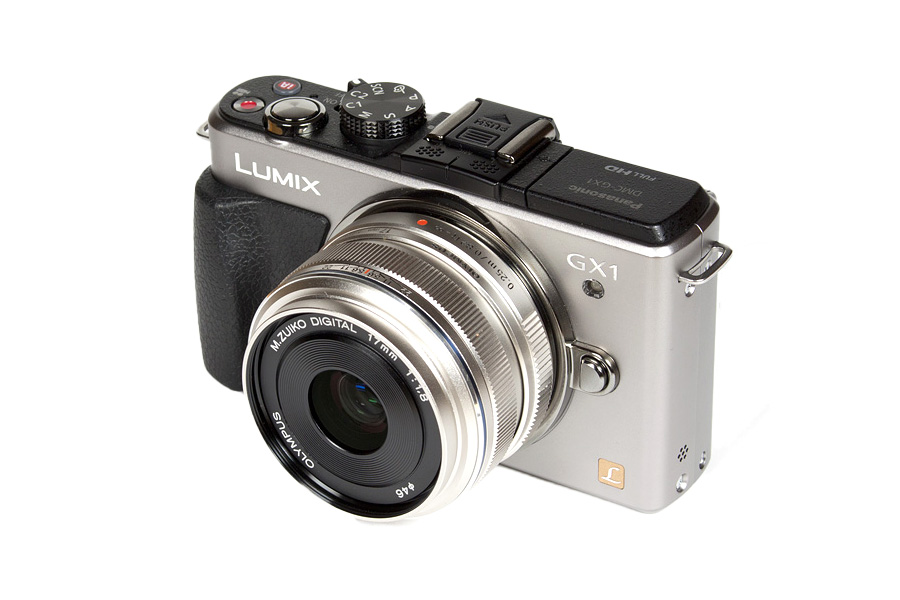
The Olympus M.Zuiko 17mm f/1.8 is – as of the time of this review – the 4th high-speed prime lens for the micro-four-thirds (MFT) system by Olympus. It is a moderate wide-angle lens thus targeting applications such as street-, landscape- and still-life photography. While Olympus is shy of marketing this M.Zuiko as ‘pancake lens’, we’d say that given its short length (3.5cm) and marginal weight (120g), it still falls into this category. The price tag feels somewhat steep upon first glance. This seems to be a bit of an unfortunate trend in the MFT system lately – but let’s see how it ‘behaves’ during the tests.
The build quality of the Zuiko is highly impressive thanks to a tightly assembled all-metal body. The smoothly operating focus ring features a clutch mechanism (“snapshot” mechanism in Olympus terms) for switching between AF and manual focusing. Since it is far from being a budget item, it is somewhat surprising that the (barrel-shaped) lens hood is just an optional and rather pricey accessory but then we’ve already experienced this before e.g. with the M.Zuiko 12mm f/2 or 75mm f/1.8.

The M.Zuiko 17mm f/1.8 has a MSC (“Movie and Stills Compatible”) AF drive offering a silent, fast and smooth AF. Typical for mirrorless systems the AF accuracy is very high (although this is more a camera rather than a lens aspect). Manual focusing is, as usual, “by-wire” so you actually drive the AF motor when turning the broad focus ring. A rather disappointing aspect is a comparatively “long” minimum focus distance allowing a max. object magnification of just 1:12.5.
| Specifications | |
|---|---|
| Equiv. focal length | 34 mm (full format equivalent) |
| Equiv. aperture | f/3.6 (full format equivalent, in terms of depth-of-field) |
| Optical construction | 9 elements / 6 groups inc. 1xDSA, 1xAsph & 1xHR element |
| Number of aperture blades | 7 (circular) |
| min. focus distance | 0.25 m (max. magnification 1:12.5) |
| Dimensions | 57.5 x 35.5 mm |
| Weight | 120 g |
| Filter size | 46 mm (non-rotating) |
| Weight | optional, barrel-shaped, bayonet-mount |
| Other features | ZERO coating, Focus-clutch mechanism |
Distortion
The M.Zuiko lens produces only a slight degree of barrel distortion (~0.5%) which is rarely noticeable in real life conditions. However, this is only a part of the story. Micro-4/3 images are auto-corrected according to the stored lens profile (lens firmware) – this is done either by the camera (JPEG) or by the more popular RAW-converters a la Photoshop. The “untouched RAW” results, showing the original capability of the lens, are much worse with a barrel distortion as extreme as ~4.5% so it is somewhat under-designed and relying on the auto-correction here.
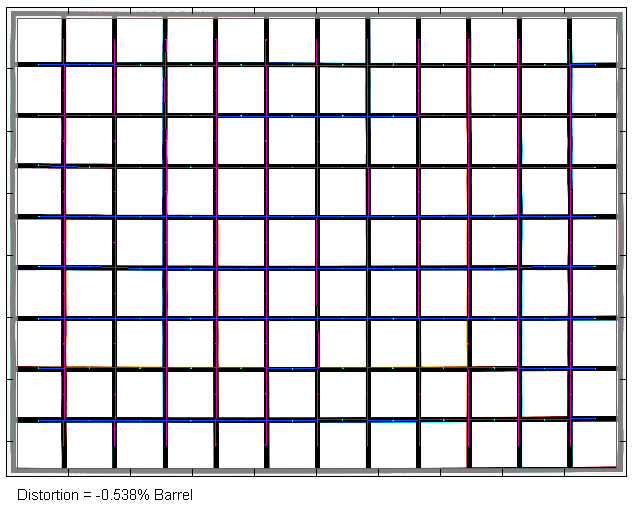
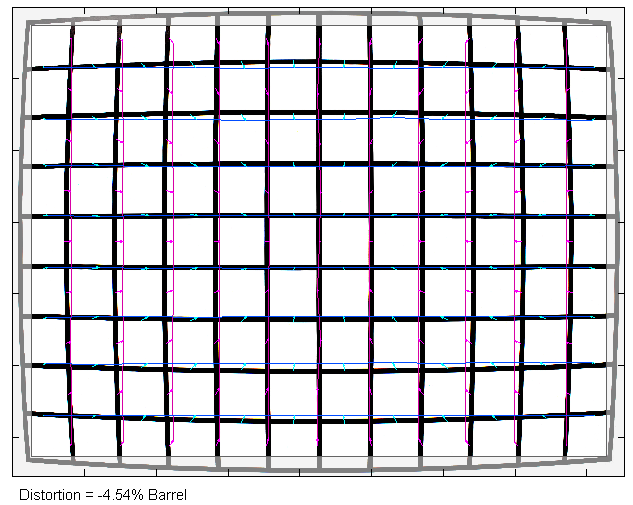
Vignetting
The light falloff is comparatively heavy (1.1EV) at fully open aperture. Stopping down to f/2.2 reduces the issue quite a bit already but if you are shooting a scene where vignetting is disturbing you should stop down beyond f/2.8.
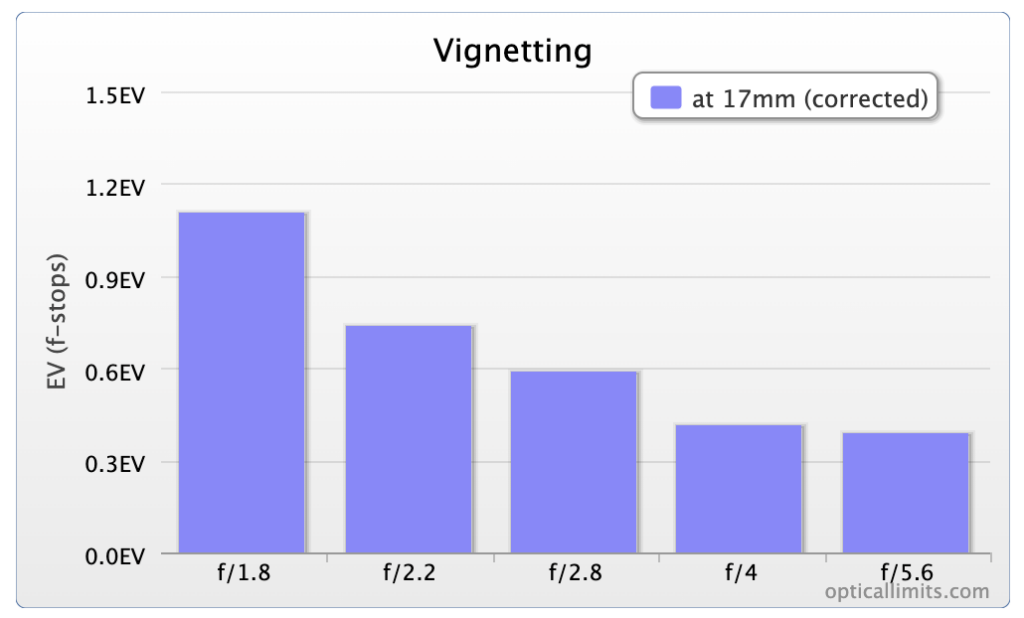
MTF (resolution)
The resolution characteristic of the 17mm f/1.8 is decent although it stays short of its mighty cousin – the M.Zuiko 75mm f/1.8ED – which we reviewed recently here. Having said that, the center resolution is already very good to excellent at f/1.8 followed by good results in the outer image region. This is impressive at this setting. However, technically there’s only a marginal improvement potential when stopping down. Diffraction has a limiting effect from f/5.6 onward but the results remain very usable even at f/8. For what it’s worth we also verified the results based on uncorrected RAWs (without distortion correction) but it didn’t really make much of a difference with respect to the borders. There is a slight degree of field curvature in the image corners which may be visible at large apertures.
The center quality of the tested sample was good for a lens in this class.
Please note that the MTF results are not directly comparable across the different systems!
Below is a simplified summary of the formal findings. The chart shows line widths per picture height (LW/PH) which can be taken as a measure of sharpness. If you want to know more about the MTF50 figures you may check out the corresponding Imatest Explanations.
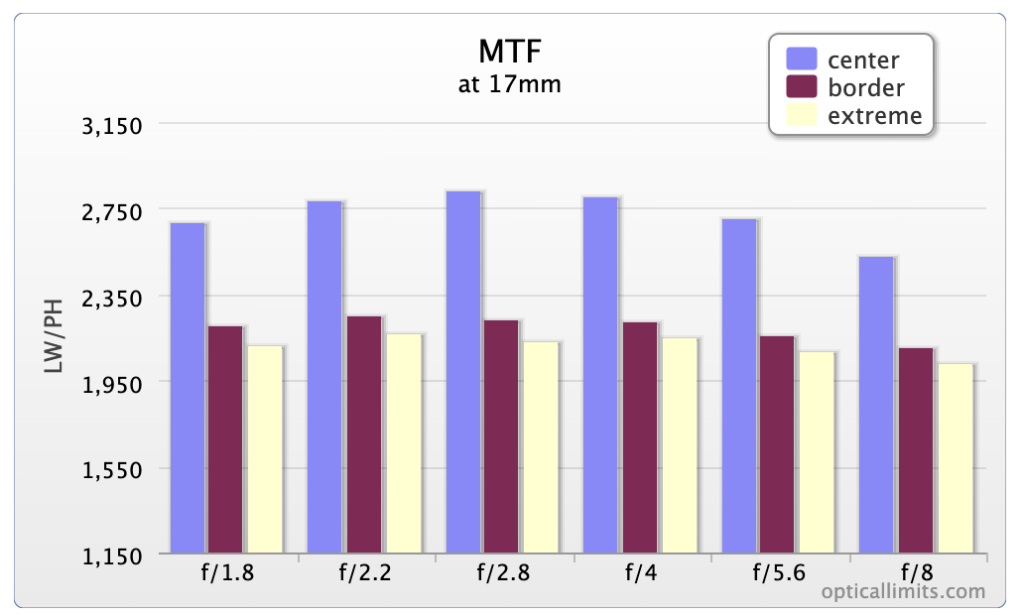
Chromatic Aberrations (CAs)
Lateral CAs (color shadows at hard contrast transitions at the image borders) aren’t a really strong aspect of the Olmypus lens. An average CA pixel width of around 1.8px at the image borders will be visible in some situations.

In order to illustrate the issue – here’s a sample crop taken from the image borders:

Sample Images
The Olympus M.Zuiko 17mm f/1.8 may not be a stellar performer but it is certainly an interesting lens considering its strengths. High speed wide-angle lenses tend to suffer from poor corners at large apertures but the Olympus lens actually does a decent job here. The center is already very sharp and contrasty at f/1.8. The borders are also quite decent here although slight field curvature has a certain impact in the corners. So if you are into low light or shallow depth-of-field photography the M.Zuiko is a good candidate. The technical image quality doesn't overly improve by stopping down but the field curvature dissolves towards medium aperture settings.
The bokeh is very good for a wide-angle lens (they tend to be rather rough here). Except some bokeh fringing (colored out-of-focus halos) at large apertures though. The amount of lateral CAs is comparatively high for such a lens. Distortions are not a problem in the real life but the original characteristic - present in the RAW data - is rather mediocre.
The mechanical quality is certainly convincing with its all metal body and a "focus-by-wire" focus ring. The focus clutch mechanism may also come handy at times. The AF is impressively fast and silent thanks to Olympus' MSC drive. Olympus claims that it operates smoothly for movies but more serious users will probably prefer to stick to manual focusing.
Now is it worth the comparatively high price tag ? Well, it depends. Some argue that there's no substitution for speed than more speed and the M.Zuiko is about as fast as it gets in this lens class within the micro-four-thirds system. Its nearest competitor, the Panasonic Lumix G 20mm f/1.7 ASPH is slightly cheaper but not quite as 'sexy' in terms of build quality and field-of-view. Performance-wise the Panasonic lens may be slightly sharper whereas the M.Zuiko has a better bokeh.
-
Optical Quality
-
Build Quality
-
Price / Performance

